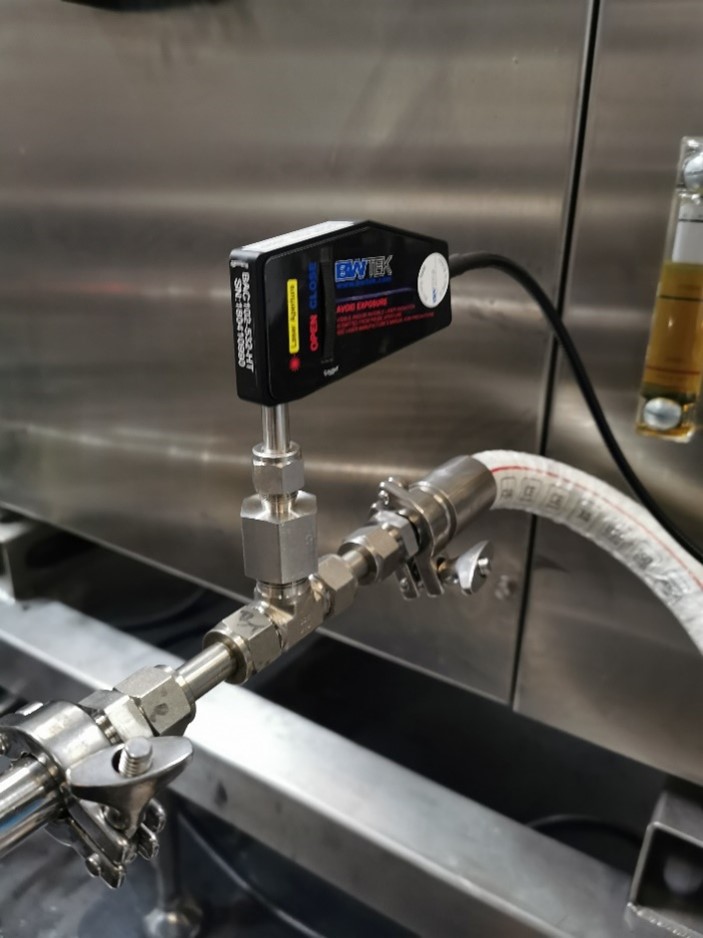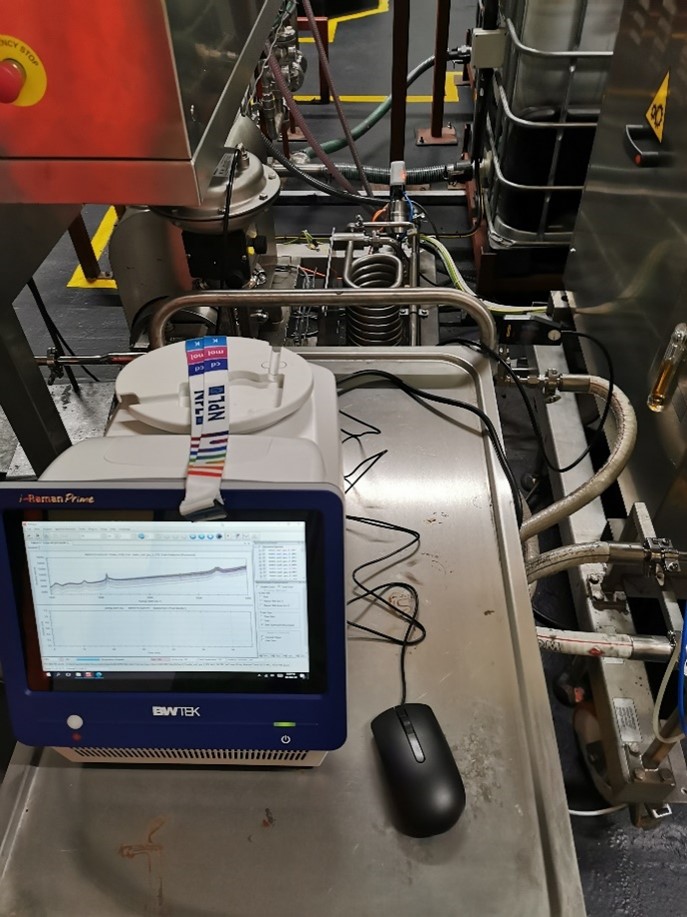
Graphene and related 2D materials (GR2Ms) could help reduce greenhouse gas emissions from the production of advanced materials. Using GR2M nanoplatelets in applications such as reinforcing concrete or improving battery performance will require a dramatic increase in production. As the production of GR2Ms is scaled-up, the ability to effectively and efficiently measure the material properties of the nanoplatelets, both in the final product and as part of process control systems, will become critical.
It is likely that instruments used for in-line measurements will have a lower resolution than lab-based research-grade instruments. The effect that this has on the resulting measurement metrics needs to be understood in order to provide confidence in the results reported to customers.
Currently Raman spectroscopy is used to monitor the material properties of the nanoplatelets, but this requires samples to be taken out and additional preparation to make it suitable for analysis, delaying the process and incurring additional storage costs.
Ideally measurements would be acquired in-line to sample a much larger proportion of a batch, with results reported in real-time to allow more responsive adjustments to process parameters. Therefore, more rapid and easily deployed measurement methods are required. It is critical that the results generated by these tools are reliable, which can be done by referencing existing standardised methods.
To address this challenge, NPL worked with Thomas Swan & Co. Ltd., a UK based specialist chemicals company, to demonstrate the feasibility of in-line measurement of graphene nanoplatelets in an industrial setting. A portable Raman spectrometer was installed in the company’s pilot-scale production facility and set-up to acquire measurements from materials during a production run. During the process, GR2M platelets are exfoliated from graphite in a liquid. The results showed that the signal of Raman scattered light obtained from in-line measurements was affected by the conditions in the production line, such as pressure in the pipe-line. Changes in the typical Raman metrics, based on peak intensity ratios, were also identified during the process. By taking samples for analysis off-line, the changes in the measured spectra can be validated against standardised methods, and shown to reflect changes in material properties during production.

The use of the portable Raman spectrometer to deliver these measurements has demonstrated the feasibility of in-line measurements using relatively low-cost instruments. This offers a solution to companies producing a range of advanced materials using GR2M nanoplatelets for net zero applications, helping the UK in meeting net zero carbon emission targets.
While demonstrating the feasibility of the method to monitor material properties, NPL also identified metrology challenges in interpreting changes in measured spectra. By continuing to understand and address these issues, users will achieve increased confidence in deploying in-line Raman as a quality control method.
NPL is working with several other companies, and the Graphene Engineering Innovation Centre at the University of Manchester, to expand the range of applications for Raman spectroscopy for in-process measurements. By understanding how the measurement challenges vary in different settings, NPL is developing additional measurement tools that can be implemented in-line or at‑line to enhance process control. Combining information from several different measurement methods means a more complete characterisation of the production material can be obtained. This will be beneficial to manufacturers who need rapid, almost instantaneous, in-line characterisation of materials, and will help to lower costs, reduce wastage and improve product quality.
Summing up the project, Dr Keith Paton, NPL Senior Research Scientist said: “It has been a fantastic opportunity to demonstrate in-line Raman spectroscopy in an industrial setting. Raman spectroscopy is widely used for graphene characterisation, and so to be able to expand its use in this way is exciting. As the production rates for industry material producers increase, in-line measurements will become both more important and more widespread, and so it is important that the measurement challenges are understood and addressed early in the process.”
The possibility to characterise graphene nanoplatelets (GNP) in-line during the exfoliation process is exciting for Thomas Swan. An in-line Raman spectrometer, not only has the potential to expand our capability to study the exfoliation process, but it can also make GNP production more efficient, enhancing quality control capabilities.
Dr. Marco Visconti, Research Team Leader, Thomas Swan & Co.
Find out more about NPL’s work with the Manufacturing industry
Find out more about how NPL is supporting UK Prosperity
Find out more about NPL’s Advanced engineering materials products and services
Find out more about NPL’s Graphene and 2D Materials services
Find out more about NPL’s Surface Technology research